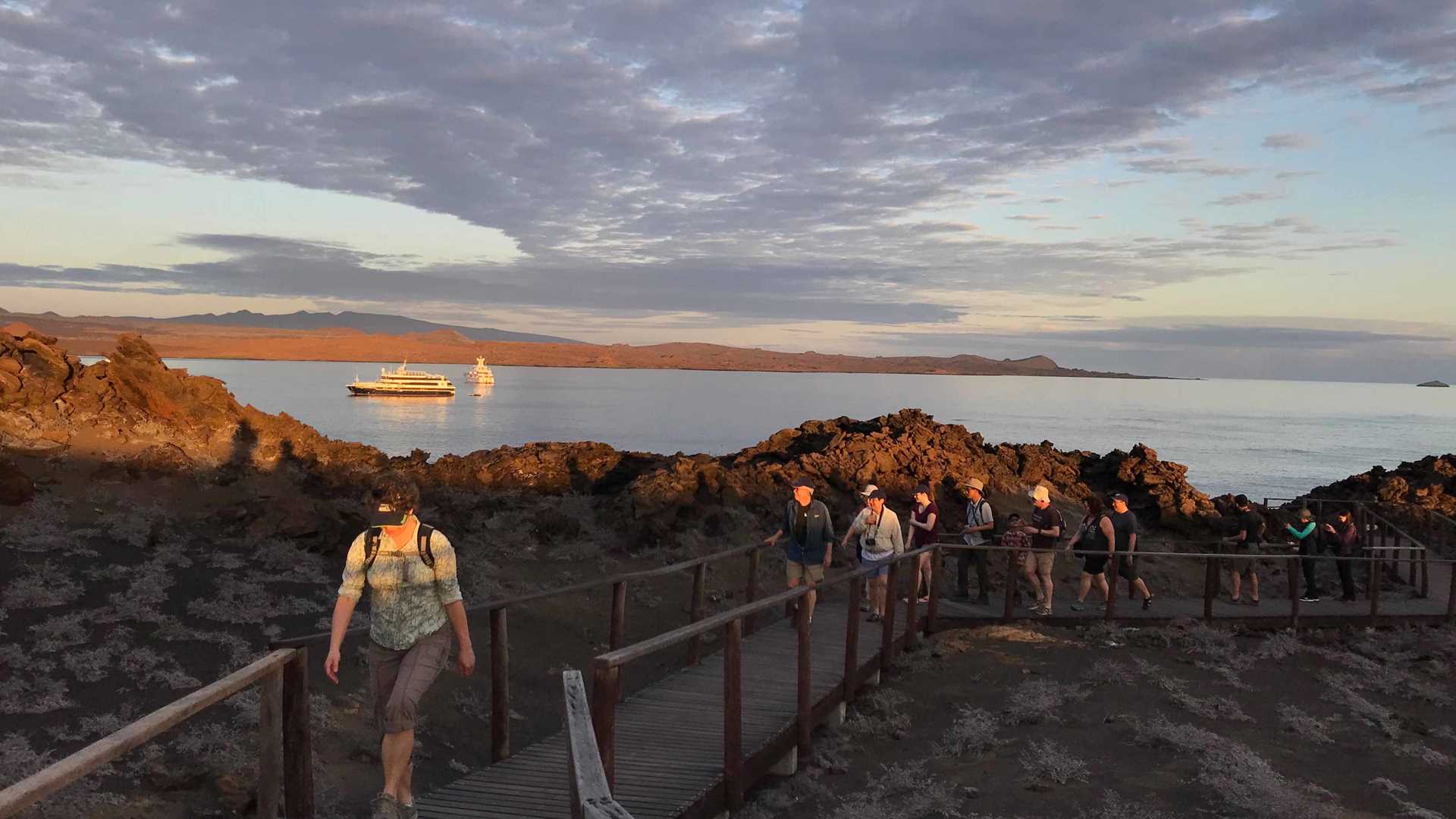It is six am and the sun colors the clouds in the sky as it rises, penguins jump in the water to start their feeding routine, and guests of the National Geographic Islander wake up to their first full expedition day in the Galapagos Islands. Today we had an early start with a morning walk up to the highest point of Bartholomew Island. As we walked on the wooden trail built by the Galapagos National Park, we learned about the geology of the Galapagos, and when we got to the top we were rewarded with the breathtaking view of the most iconic image of the Galapagos Islands, Pinnacle Rock on Bartholomew Island. This island looks like a rock fell from the sky, looking more like the moon than earth itself due to its rich ash soil, arctic looking vegetation, and its lack of wildlife. As we entered the water that surrounds this island we entered a different world. Snorkeling around Bartholomew is overwhelming, numerous sea stars color the bottom of the ocean, a diversity of fish swim back and forth as they feed and protect territories, and penguins abound. Yes, penguins! Galapagos penguins feeding and bathing in front of our eyes. We had an amazing start to the day with beautiful views and curious wildlife. After enjoying a typical Ecuadorian lunch buffet, the Captain moved the National Geographic Islander to a new island and we got to kayak, snorkel, and then hike on one of the most beautiful beaches in the world, Rabida Island. A spectacular red sand beach composed mainly of iron oxide, which is home to the Galapagos sea lions that come to rest, looking golden in the sunset light. Galapagos is truly a magical place where the sun rises and sets in harmony with the innocence and tameness of its wildlife!
- Daily Expedition Reports
- 19 Feb 2018
Bartholomew & Rabida Islands, 2/19/2018, National Geographic Islander
- Aboard the National Geographic Islander
- Galápagos
Gianna Haro, Naturalist
Most of Gianna´s memories seem to be dreams, made on flawless white sandy beaches with black lava rock contours and gorgeous turquoise ocean waters. Most of it happened while barefoot, in an enchanting place that some people regard as an ideal natura...
Read MoreShare Report
Related Reports
11/23/2022
Read
National Geographic Islander II
Isabela and Fernandina
Our day began with the chance to point out a lot of interesting geological features as we enjoyed Zodiac tours along a massive flank of Ecuador Volcano on Punta Vicente Roca. In the afternoon, we took a sunny walk on Punta Espinoza on Fernandina Island. We spotted many iguanas, and a bunch of sea lions hanging around, too.
11/22/2022
Read
National Geographic Islander II
North Seymour & Rabida Islands
Relatively small and low compared to neighboring Santa Cruz, North Seymour is located to the north of Baltra. The island is dry with predominantly low shrubs, like prickly pear cacti. The incense trees are bare during the dry season. Seabirds like frigatebirds and blue-footed boobies nest on the island, and sea lions rest on the sand when they are not fishing. Land and marine iguanas also live here. Rabida is in the middle of the archipelago and has a striking red sand beach. We observed a small colony of sea lions of all ages resting or nursing. Behind the beach, American flamingos nest in a brackish lagoon. This island is full of contrasts and wildlife that we enjoyed observing during this day of expedition.







